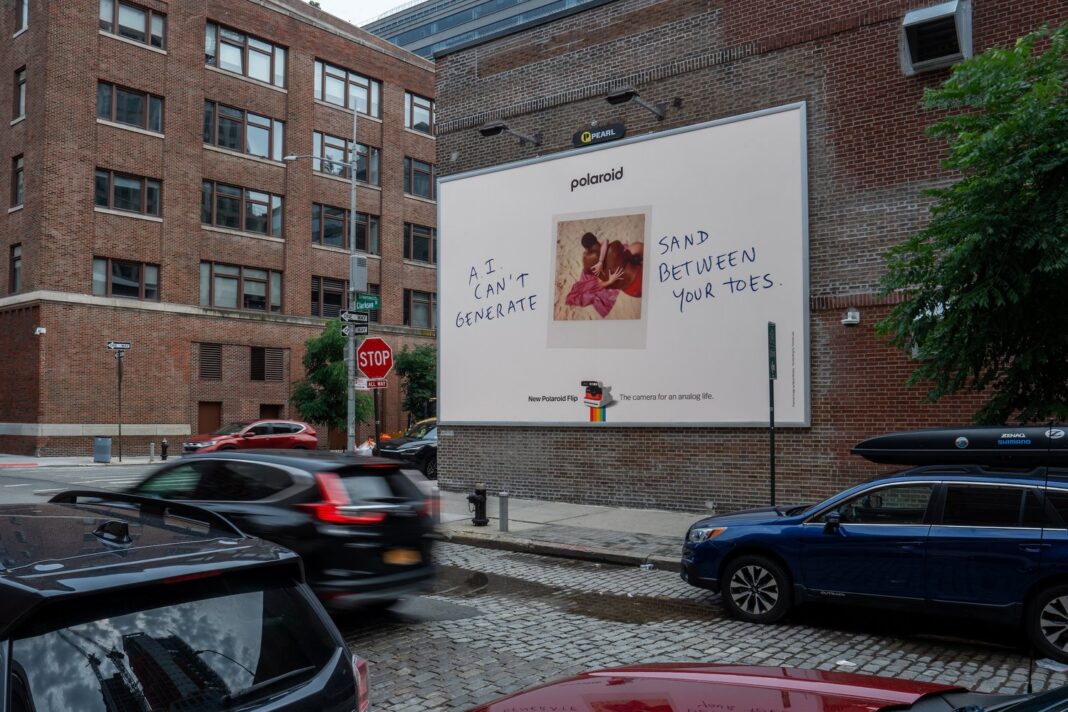Polaroid is pushing back against screen fatigue and AI overload with its latest campaign featuring the new Polaroid Flip instant camera. Advertisements and out-of-home billboards in New York and London now challenge passersby to rethink where memories belong. Think bold copy like: “No one on their deathbed ever said: I wish I’d spent more time on my phone,” and “Real stories. Not stories & reels.”
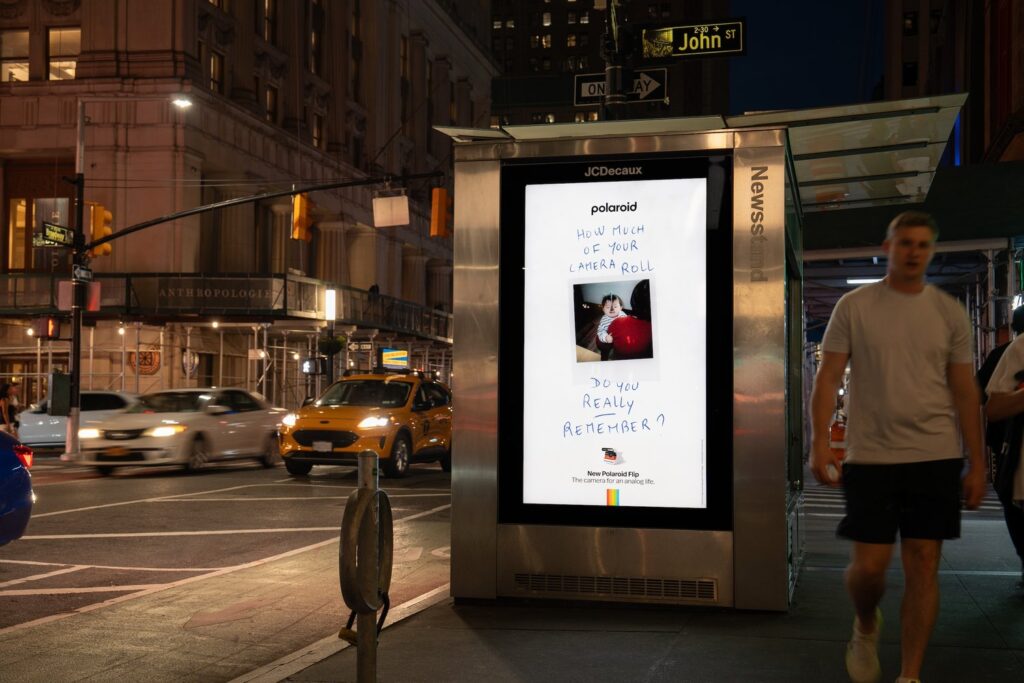
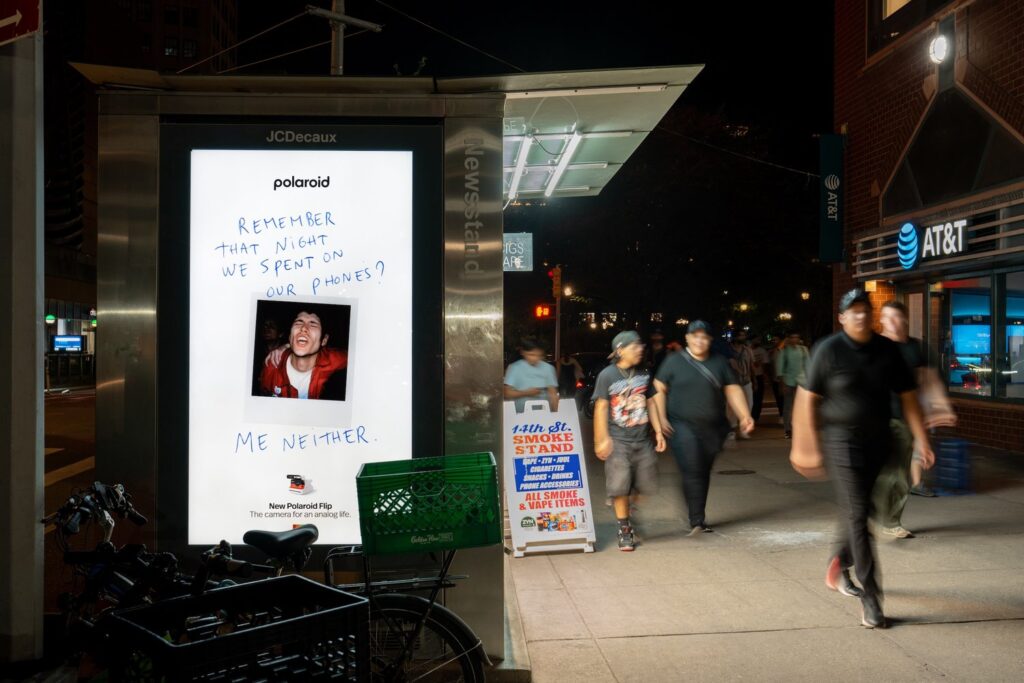
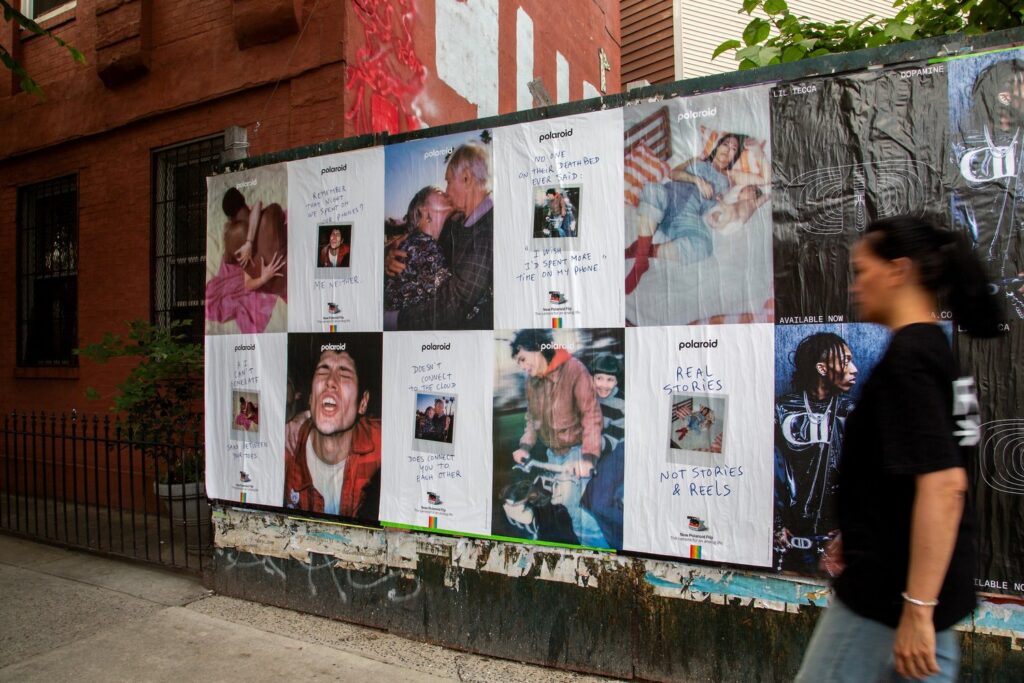
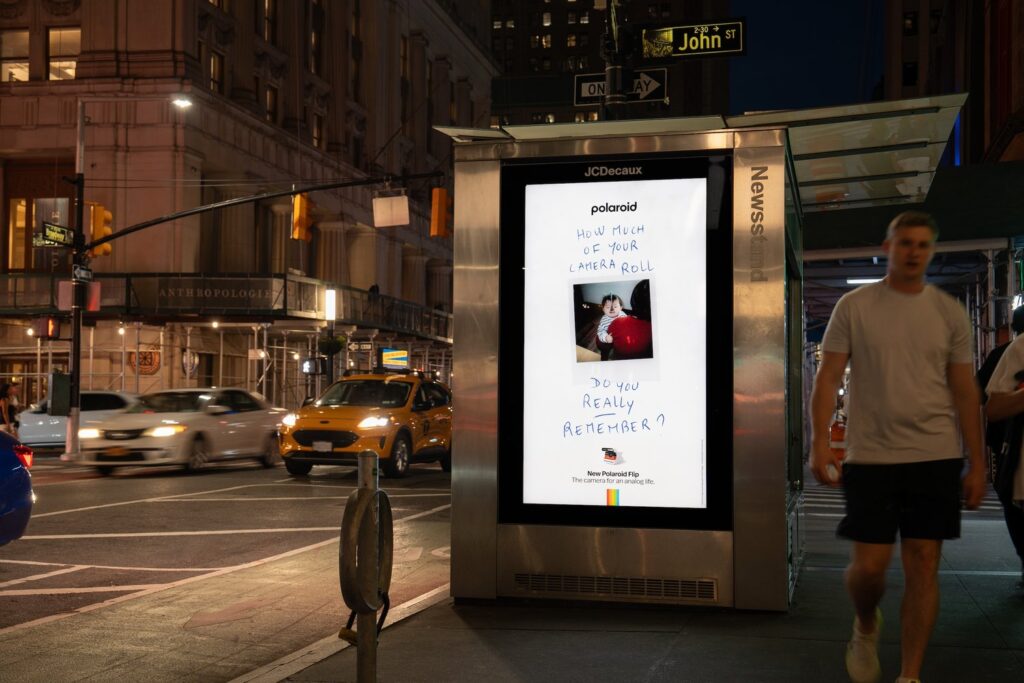
The visuals deliberately clash with tech-dominated spaces, right outside Apple Stores and inside busy airports, asking a simple question: what if life happened off-screen instead of on it? The campaign doesn’t end at print; immersive walking tours in Paris, Tokyo, and soon London invite participants to ditch their phones and explore using only the Flip. Each photo they snap becomes a postcard, mailed physically to someone, a touchstone for genuine connection.
The messaging is reinforced with social, paid, and creator-led content, aimed squarely at Gen Z, while OOH placements act like visual exhibitions in public spaces. The Polaroid Flip itself is more than nostalgia, it’s packed with features like sonar autofocus, adaptive flash, and a hydropocal lens system, merging analog experience with modern performance.
Polaroid’s Brand & Creative Director, Patricia Varella, sums it up: humans are built for tangible connection. The analog photograph, in all its imperfect glory, captures emotion and empathy in ways digital cannot. It isn’t anti-technology, but it’s a reminder of what we lose when we stop living in the moment.
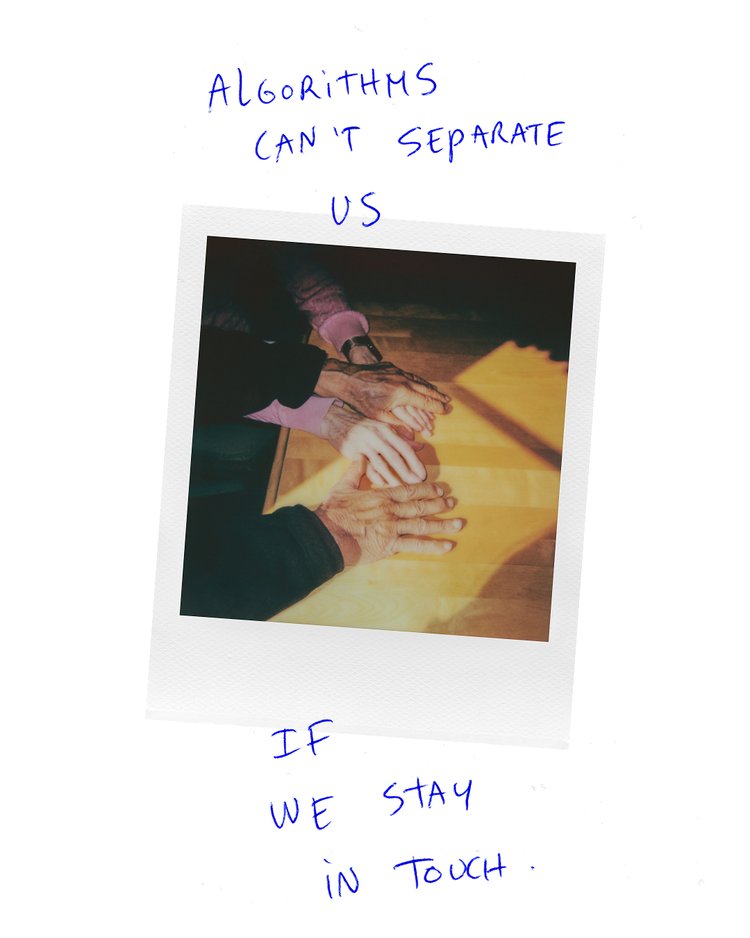
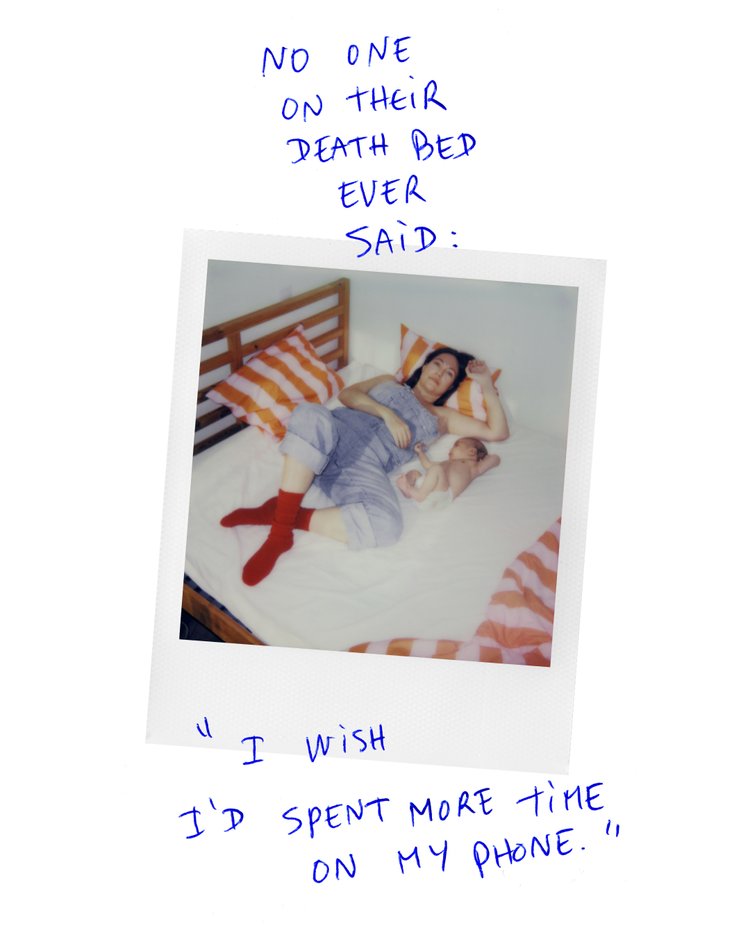
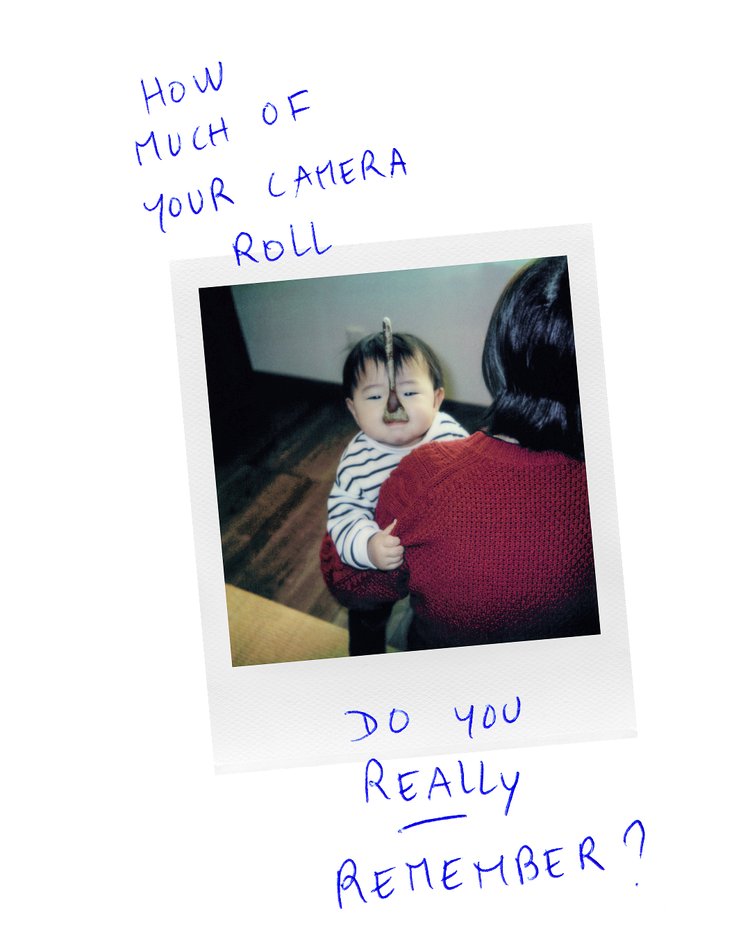
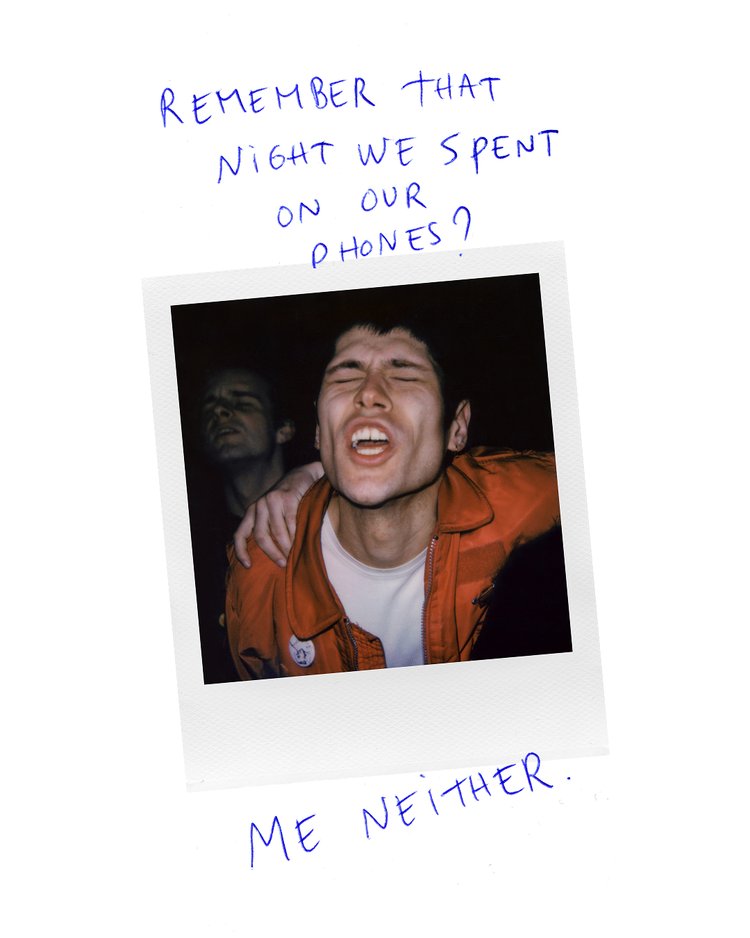
Key Takeaway:
Polaroid’s campaign isn’t just promoting a camera, it’s igniting a movement. In an era of endless scrolling, it’s calling on us to embrace the unfiltered, tangible, and emotionally resonant. The Flip isn’t just a product, it’s a prompt to live, connect, and remember in real time.
